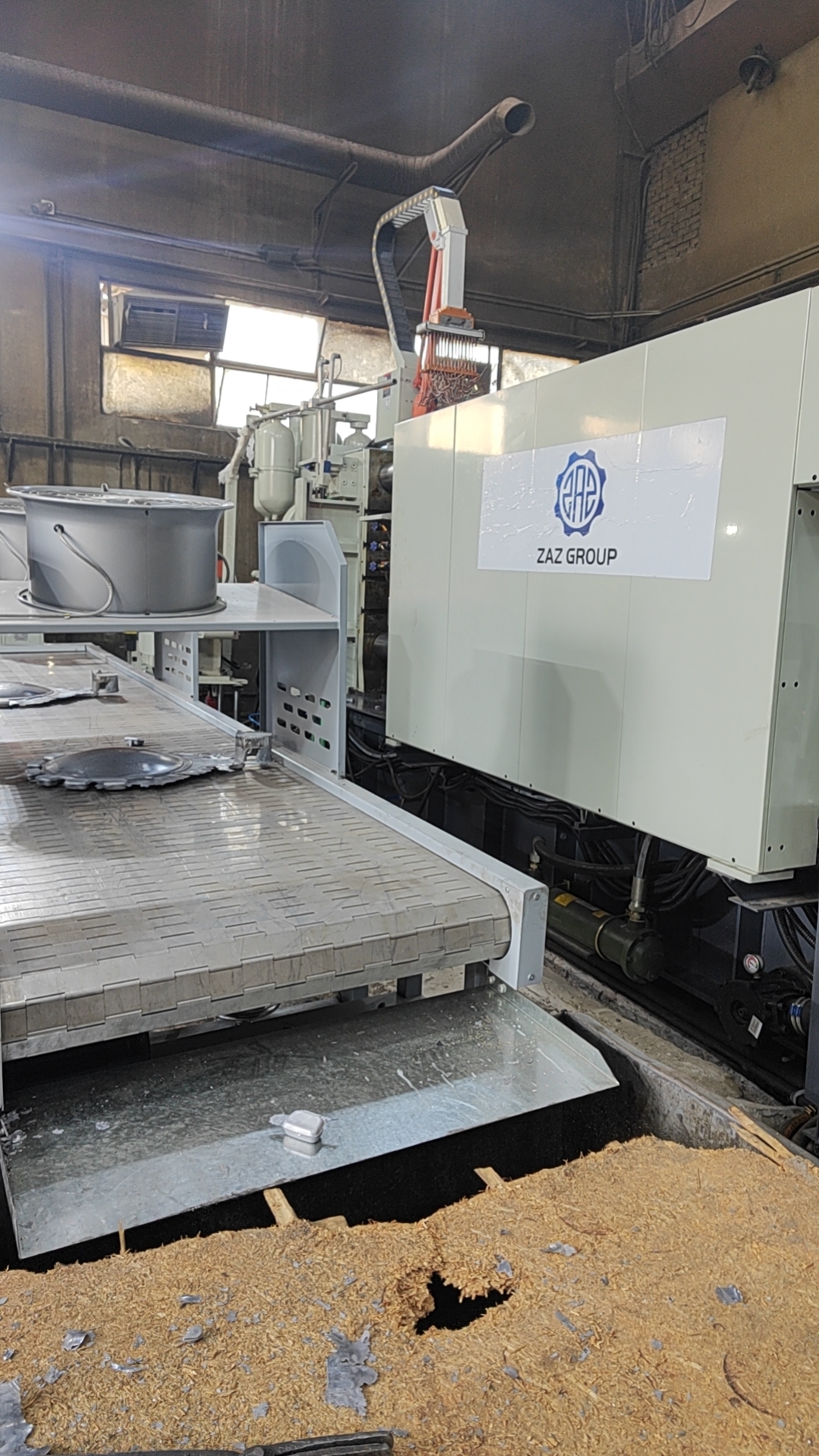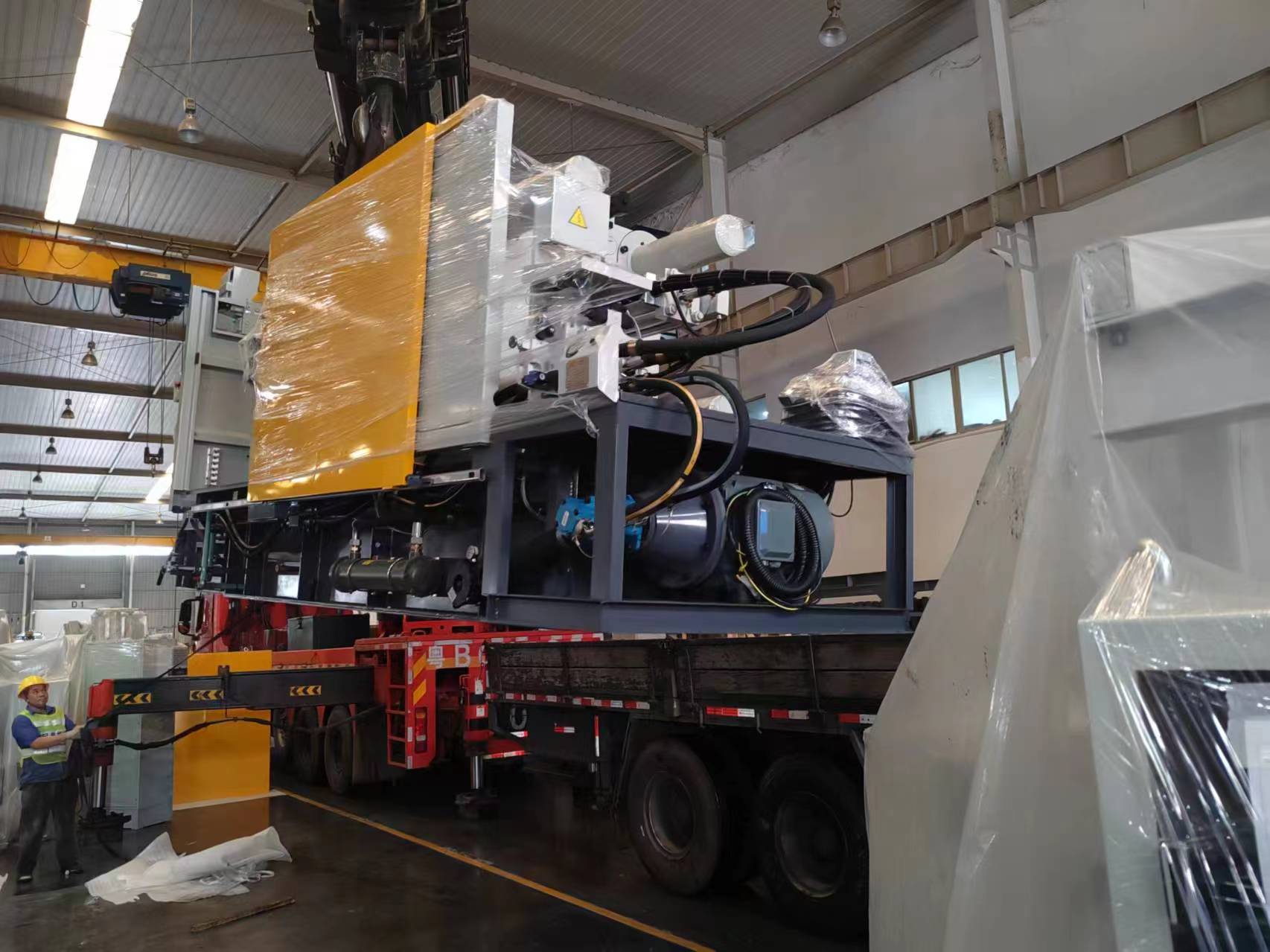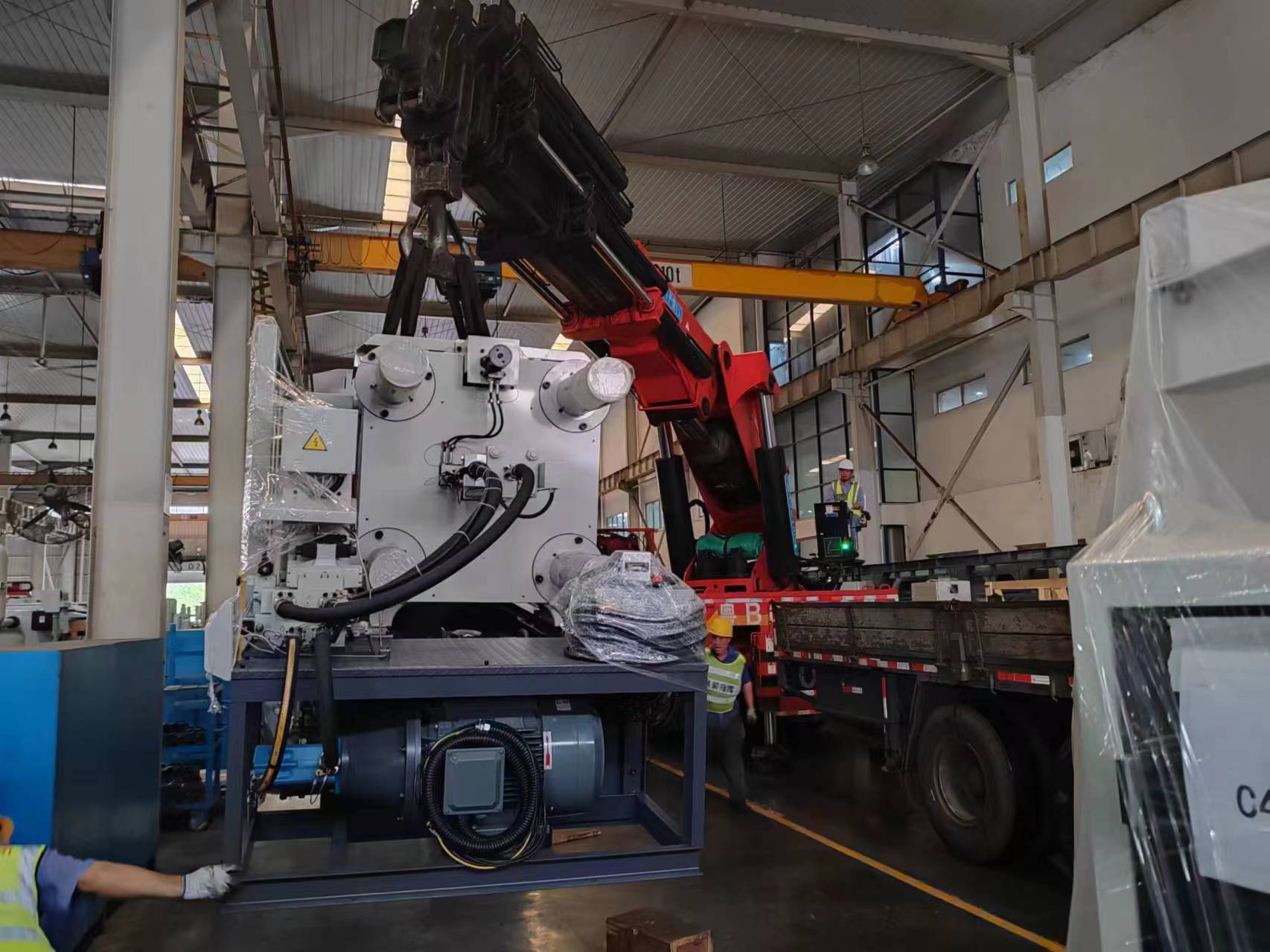Camp Crucible
LK Die Casting Machine / 2024-09-13 14:39:51
2024-09-13 by Cherry
In the die-casting industry, there is a very important
but often overlooked equipment - Camp Crucible. For those
who do not understand the die-casting process, the term
may sound unfamiliar, but in the field of professional
die-casting, Camp Crucible is one of the key pieces of
equipment.

It is usually made of high-temperature resistant materials,
can withstand extremely high temperatures, and provides
a stable and reliable container for the smelting of various
metals.
When the metal raw materials are put into the camp crucible,
under the action of high temperatures, they gradually melt
into liquid, ready for the next step of processing.
It plays a vital role in the production process, especially
in the material handling and smelting stages.
This article will explore in detail the role of the camp
crucible and its close connection with the die-casting
machine.
What is a camp crucible?
A camp crucible is a container for melting metal, usually
made of high-temperature resistant ceramic, graphite, or
metal materials. Its main function is to provide an environment
that can withstand extremely high temperatures so that solid
metal can be converted into liquid for use in die-casting
process.

The camp crucible provides high-quality liquid metal for
the die-casting machine. Only the molten metal that has
been carefully melted by the camp crucible can show perfect
fluidity and filling properties under the action of the
die-casting machine. Without the full melting of the metal
by the camp crucible, the die-casting machine cannot obtain
high-quality raw materials, and the products it produces
will also have defects.
In die-casting, the main function of the crucible is to
ensure that the metal will not be contaminated or damaged
during the melting and liquid state and maintain a stable
molten state. The camp crucible has excellent high-temperature
resistance and good thermal conductivity, ensuring that
the metal can be heated evenly and melted quickly.
At the same time, the die-casting machine also puts forward
higher requirements for the camp crucible. To meet the
high-speed production needs of the die-casting machine,
the camp crucible needs to continuously improve its own
melting efficiency and temperature control accuracy.
Only in this way can it be ensured that the die-casting
machine is continuously provided with liquid metal that
meets the requirements.

The relationship between the camp crucible and the die-casting
machine
In the die-casting process, the die-casting machine and the
camp crucible are two important components that are closely
connected. The die-casting machine is a machine that injects
liquid metal into the mold and shapes it, while the camp crucible
is responsible for providing high-quality molten metal to
ensure the smooth progress of the production process.
There are two main types of die-casting machines: hot chamber
die-casting machines and cold chamber die-casting machines.
The two differ in their connection to the crucible:
1. Hot chamber die casting machine: In a hot chamber die
casting machine, the crucible is integrated with the die
casting machine. The metal is melted in the crucible and
then injected directly into the mold through the injection
device on the machine body. The crucible is directly connected
to the furnace and the die-casting machine here, playing
a key role in maintaining the molten temperature of the
metal.
2. Cold chamber die-casting machine: In a cold chamber
die-casting machine, the crucible is usually separated from
the die-casting machine. After the metal is melted in the
crucible, the liquid metal is transferred to the injection
system of the die-casting machine by manual or automatic
devices. This method is suitable for metals that require
a higher melting point, such as aluminum and copper alloys.
The importance of the crucible in die-casting
In die-casting production, the importance of the crucible
is reflected in several aspects:
1. Maintaining the purity of the metal: The crucible material
is corrosion-resistant, which can prevent chemical reactions
between the metal and the outside world when it is melted,
thereby maintaining the purity of the metal. This is essential
for producing high-quality die castings.
2. Controlling temperature: The design of the crucible ensures
that the metal can be melted and maintained within a stable
temperature range, which is essential for the surface quality
and internal structure of the die casting.Improper temperature
control may cause pores, cracks, or other defects in the die
casting.
3. Extending equipment life: High-quality crucibles can reduce
the wear of molten metal on the equipment, especially in
high-temperature operating environments. The material and
design of the crucible can also effectively resist thermal
shock and reduce the frequency of equipment maintenance
and replacement.
How to choose the right crucible
Choosing the right crucible is essential for the success
of the die-casting process. Here are some factors to consider:
1. Material: Crucibles are made of different materials, such
as graphite, ceramic, or metal. Graphite crucibles are highly
resistant to high temperatures and suitable for melting
high-melting-point metals such as aluminum and copper; ceramic
crucibles are mostly used for low-melting-point metals such
as zinc and magnesium. The selection needs to be determined
based on the type of metal being processed and the requirements
of the die-casting process.
2. Size: The size of the crucible must match the capacity and
production needs of the die-casting machine. If the crucible
is too small, it may lead to frequent refilling and affect
production efficiency; if it is too large, it may waste
energy.
3. Thermal conductivity: High thermal conductivity materials
can ensure that the metal melts quickly and evenly, and
help save energy. In the die-casting process, the thermal
conductivity of the crucible directly affects the production
efficiency and the quality of the casting.
Maintenance and care of crucibles in the camp
To ensure the service life of the crucible and the
stability of the die-casting process, regular maintenance
and care are essential. Here are some maintenance suggestions:
1. Regularly check the crucible for cracks or damage
Once the crucible is damaged, it should be replaced
in time to avoid metal leakage or process failure.
2. Clean the residue in the crucible
After each use, there may be metal or oxides that are not
completely melted in the crucible, which will affect
the purity and melting efficiency of the metal.
Therefore, regular cleaning of the crucible can keep
it in good working condition.
3. Control the use of temperature
The use temperature of the crucible should not exceed
its tolerance range, otherwise, it may cause deterioration
or even cracking of the crucible material.
In the actual production process, operators need to carefully
maintain and manage the camp crucible and die-casting machine.
Regularly check the wear of the camp crucible and replace
damaged parts in time to ensure its normal smelting function.
At the same time, the die-casting machine should also be
debugged and maintained to ensure that its pressure control
is accurate and its action is stable and reliable.
In addition, with the continuous advancement of science and
technology, camp crucibles, and die-casting machines are also
constantly innovating and developing. New camp crucible
materials continue to emerge, which improves the service
life and smelting effect of the crucible. The die-casting
machines are also developing in the direction of intelligence
and automation, further improving production efficiency and
product quality.
Conclusion
As one of the core equipment in the die-casting process,
the camp crucible plays a vital role. Whether it is a
hot chamber die-casting machine or a cold chamber die-casting
machine, the selection, and use of the crucible directly
affects the quality and production efficiency of the final
product.
Understanding the relationship between the crucible and
the die-casting machine, choosing the right crucible material,
and regularly maintaining the equipment are all key steps
to ensure the success of die-casting production.
The camp crucible is not just a simple molten container,
it shoulders key tasks in the metal casting process.
By gaining a deeper understanding of its role and importance
in the die-casting process, you will be able to better
optimize the die-casting production process, improve
product quality and extend the service life of the equipment.
In short, the camp crucible and the die-casting machine are
an indispensable and important part of industrial production.
They are interdependent and mutually reinforcing and together
have made great contributions to promoting the development
of industry.
In the days to come, we believe that with the continuous
advancement of technology, the camp crucible, and the
die-casting machine will continue to move forward hand
in hand and create more brilliant achievements.
I hope this article will help you understand the relationship
between the camp crucible and the die-casting machine.
If you have more questions about the die-casting process
or equipment, please feel free to consult further.
For more info, you can refer to:
https://www.tiktok.com/@lk_diecastingmachine/video/7405113006880820522
https://www.youtube.com/shorts/JLX410QV_kw
To learn further info about Die Casting Machines,
pls contact LK Die Casting Machine Authorized Official Agent
LK OFFICIAL AGENT OFFICE DCM
LK Die Casting Machine Authorized Official Agent for Egypt(EGY)
Saudi Arabia(ksa)
United Arab Emirates(UAE)
The Islamic Republic of Iran(Iran)
Qatar(QAT)
The State of Kuwait(Kuwait)
The Middle East
Address: 1. Industry Zone, South of Port Said Kebly, Cairo, Egypt
2. EX 14., EASTERN RING ROAD, AI RAYAN DISTRICT,
RIYADH, SAUDI ARABIA
Arabic Website: https://ae.zazdiecasting.com/
English Website: https://www.zazdiecasting.com/
Phone/WhatsApp/Wechat: 0086 13598704163
Mobile: +20 101 304 3317 +20 150 181 8310
Email: jack@zazmae.com ahmedmahmoud@zazmae.com
OTHER CONTENT
-

2024-09-19 14:16:15 LK Cold Chamber Die Casting Machine DCC900 Locking Force: 9000KN Die Height: 400-1000mm Space Between Tie Bars: 930x930mm Shot Weight: 13.5Kg Casting Area Max:2250c㎡
More -

2024-09-19 14:11:06 LK Cold Chamber Die Casting Machine DCC280 Locking Force: 2800KN Die Height: 250-650mm Space Between Tie Bars: 560x560mm Shot Weight: 2.9Kg Casting Area Max:700c㎡
More -

2024-09-19 10:23:07 LK Cold Chamber Die Casting Machine DCC580 Locking Force: 5000KN Die Heigh: 350-850mm Space Between Tie Bars: 760x760mm Shot Weight: 6.9Kg Casting Area Max:1250c㎡
More -

2024-09-19 10:11:20 LK Cold Chamber Die Casting Machine DCC400 Locking Force: 4000KN Die Height: 300-700mm Space Between Tie Bars: 669x669mm Shot Weight: 4.7Kg Casting Area Max:1000c㎡
More

